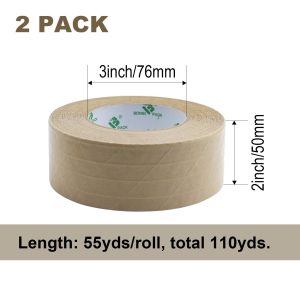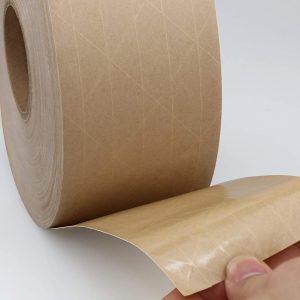Avoiding common mistakes when using tape can help ensure that your projects are successful and your materials are protected. Here are some common tape-related mistakes to watch out for and how to avoid them:
1. Incorrect Tape Selection:
- Mistake: Using the wrong type of tape for the task at hand, such as using masking tape for heavy-duty applications.
- Solution: Choose a tape that’s specifically designed for the intended purpose. Read labels and product descriptions to ensure you’re using the right type of tape for the job.
2. Poor Surface Preparation:
- Mistake: Applying tape to dirty, oily, or uneven surfaces.
- Solution: Clean and dry the surface thoroughly before applying tape. This ensures proper adhesion and prevents the tape from coming off prematurely.
3. Insufficient Adhesion Pressure:
- Mistake: Not pressing down firmly enough when applying tape, leading to poor adhesion.
- Solution: Use your hand, a roller, or a flat object to apply even pressure across the tape’s surface. This helps the adhesive bond effectively.
4. Stretching the Tape:
- Mistake: Stretching the tape as you apply it, which can lead to uneven adhesion and poor results.
- Solution: Apply the tape without stretching it. Stretching can compromise the tape’s adhesive properties and its ability to provide a clean finish.
5. Overlapping Tape Incorrectly:
- Mistake: Overlapping tape too much or not enough, resulting in uneven coverage or poor aesthetics.
- Solution: Follow the manufacturer’s instructions for overlapping when necessary. In some cases, slight overlapping can help create a smooth finish, but avoid excessive overlaps.
6. Applying Tape at Incorrect Temperatures:
- Mistake: Applying tape in extreme temperatures that can affect its adhesion properties.
- Solution: Ensure the environment is within the recommended temperature range for the tape you’re using. Extreme cold or heat can compromise the tape’s effectiveness.
7. Pulling Tape at the Wrong Angle:
- Mistake: Pulling tape away from the surface at an angle that can cause tearing or uneven edges.
- Solution: Remove tape at a low angle, pulling it back on itself. This helps create clean edges and prevents damage to the surface.
8. Leaving Tape On for Too Long:
- Mistake: Leaving tape on surfaces for extended periods, which can lead to adhesive residue and difficulty in removal.
- Solution: Remove tape within the recommended time frame to prevent adhesive residue. If tape is left on for too long, use heat (from a hair dryer, for example) to soften the adhesive before removal.
9. Improper Removal:
- Mistake: Ripping tape off surfaces quickly, which can damage the material or leave behind adhesive residue.
- Solution: Remove tape slowly and gently to avoid damaging the surface. If residue remains, use adhesive removers or rubbing alcohol to clean it off.
10. Not Testing on a Small Area:
- Mistake: Not testing the tape on a small, inconspicuous area before applying it to a larger surface.
- Solution: Always perform a small test before using tape on a visible area. This helps ensure the tape won’t damage or react adversely with the material.
By avoiding these common mistakes and following proper tape application techniques, you can achieve better results, save time, and prevent frustration in






















